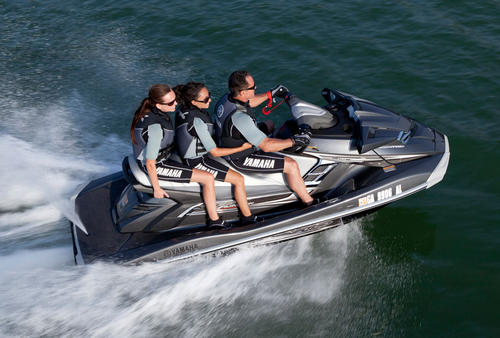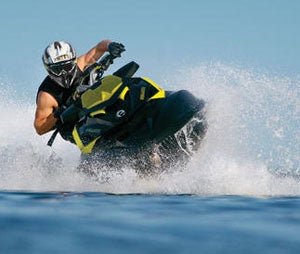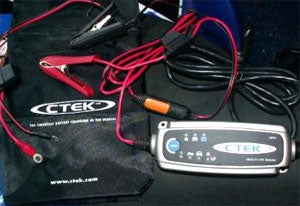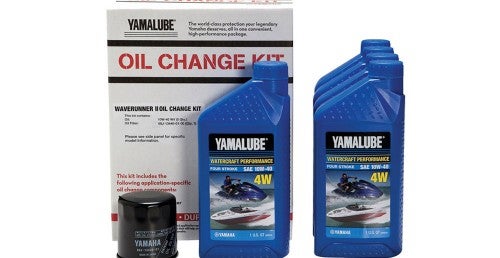How To Maintain That New PWC
A little preventative maintenance will keep your craft running for years
Getting a new PWC is a great moment. From this day forward you’re destined to have some great fun on the water. Just how long that fun lasts, however, is up to you. Maintain your craft, give it some good old-fashioned tender loving care, and it will be ready to go for years and years to come. Neglect it, however – as in ride, then just stick it on the trailer or dock until next time – and you may have fun now, but maybe not later.
Looking to make an investment that lasts for years to come? Here are five easy-to-follow maintenance tips proven to extend the life of your craft.
 If you want to have fun with your PWC for years to come, don’t neglect it.
If you want to have fun with your PWC for years to come, don’t neglect it.Break the Engine in…Properly
Trust us, we know it’s tempting to punch that throttle and tear across the lake with all the power your new engine can muster. This type of hard, strenuous effort, however, is not what your craft needs in the early stages of its life. In fact, this type of high-speed usage can actually shorten the lifespan of your engine.
VIEW: How to Find Good Service for your PWC
 When you get your new PWC you’ll want to squeeze the throtle and fly across the water right away. Fight that feeling!
When you get your new PWC you’ll want to squeeze the throtle and fly across the water right away. Fight that feeling!The solution is a proper break-in period. Breaking in your engine involves varying speeds and avoiding those extended drag runs across the water during the first hours of its use. Obviously that requires some patience and self-control. But lay off the throttle now and you’ll be rewarded later. Components will wear in and polish themselves, establishing those critical tolerances that will pay performance benefits later.
So, just exactly how long do you have to wait? It’s best to check your individual owner’s manual; different manufacturers have different requirements. A rough rule of thumb, however, is to almost continually vary speeds during the first hours of use. Start by letting your engine properly warm up by avoiding any more than one-quarter throttle for the first five minutes. After that, spend about another 30 at varying speeds, but no more than half-throttle. Bump that speed up to three-quarter throttle for the next hour, again varying speed. After that you should be ready to go.
Again, however, heed your manufacturer’s warnings. Though it may seem extreme, some recommend avoiding full throttle for as much as two full tanks of gas, or the first 10 hours of operation.
It’s brutal, we know. But your patience will be rewarded in the long run.
Don’t Forget to Flush
Always good advice, but in this case we’re talking about giving your engine a flush of cool, clear, fresh water. It’s absolutely essential to do so after every single ride if you ride your craft in the ocean. Salt can be brutal on a personal watercraft engine, resulting in rust and corrosion that can do everything from shorten your engine’s life to clogging up its cooling passages. And your engine isn’t the only thing vulnerable. Any metal, be it your pump, steering linkages, or driveshaft, is susceptible.
VIEW: Five Ways to Beat Saltwater Corrosion
 Though ocean riding has its perks, flushing the engine with fresh water after every ride is a necessary evil.
Though ocean riding has its perks, flushing the engine with fresh water after every ride is a necessary evil.The latter items are best addressed with a good blast of the hose. Literally anywhere salt has been you want to follow up with a good rinse. The engine, however, needs special attention. There’s a good chance your craft already has a flush fitting. If not, check with your dealer or favorite aftermarket supplier. Flush kits are easily installed.
Flushing needs to be done properly in order to avoid damage. Always start your engine first, and then turn on the water supply within about 15 seconds. Otherwise you could force water backwards through the cooling system. Once running, let the engine steadily idle for about 5-10 minutes. Break up the monotony with a few quick punches of the throttle to bump RPM up slightly, but don’t give the engine any prolonged periods of throttle; just a gentle nudge.
When you’re finished, turn off the water first. Then, give your craft a few gentle revs to blast the remaining water out of the cooling lines. Again, avoid running the engine without water for more than 15 seconds. Once done, shut off the engine, disconnect the flush hose, and cap any flush fitting (if necessary).
Think flushing is only for ocean riders? It’s also a great idea for those who ride in freshwater as well. The reason is that lakes and rivers contain contaminants and debris of their own, gunk that can also clog up your cooling passages or shorten engine life.
Keep Fuel Fresh
 Don’t fill up your PWC’s tank with E85 fuel.
Don’t fill up your PWC’s tank with E85 fuel.Not riding for a while? It’s a good idea to top off your tank to prevent condensation forming. Another good idea is to add fuel stabilizer, especially given the reality of today’s ethanol-blended gasolines. Check your owner’s manual or ask your dealer for the manufacturer’s recommendations. Most will suggest adding stabilizer during any period of non-use to prevent oxidation, phase separation, or diluting of the fuel’s octane rating. Some will even recommend adding it regularly.
And while we’re on the subject, pay close attention at the pump. Never fill your PWC’s tank with E85, which contains 15% ethanol. PWC engines simply aren’t designed for it.
Wax on, Wax off
Remember the Karate Kid? Then make like Daniel-son and keep your craft’s exterior clean and waxed. The cleaning part should be obvious, the waxing part will help ward off harmful UV rays that can damage and/or fade your craft’s exterior and colors.
When not in use, consider a storage or trailering cover. Just like your skin, the more barriers you can put in between the sun and your hull/seat/traction mats, the better.
VIEW: Five Tips for a Worry-Free Summer
Don’t Neglect Your Battery!
 Maintain your battery by keeping it charged and ready to ride.
Maintain your battery by keeping it charged and ready to ride.Finally, don’t forget your craft’s other power source – its battery. Keeping your battery fully charged in between riding sessions is the best way to prolong its life, as a charged battery better resists the formation of sulfate crystals on its plates, which will lessen the battery’s ability to hold a charge. A maintenance charger, like the Battery Tender, is perhaps the easiest way to keep the battery charged. Besides longer life, you’ll also be guaranteeing your craft is ready to go when you are.
Another good idea is to protect your battery terminals with a light coating of waterproof, dielectric grease. Smear some on if your craft is brand new. If the terminals show any signs of corrosion or dirt, clean them first with a solution of baking soda and water, dry, then coat.
Remember, think in the long-term. Sure, all this stuff is a hassle, and yes, we’d all rather just hop on our craft and ride, then just leave it until the next time. But by spending a little extra time on preventative maintenance, you’ll be rewarded with a much longer life span for your PWC.
Get PersonalWatercraft.com in your Inbox!
Like PersonalWatercraft.com on Facebook
Comments
Most Popular

2025 Yamaha JetBlaster PRO 2-Up Review

Remembering the Sea-Doo XP

2024 Kawasaki Jet Ski STX 160X Review

Whatever Happened to the Wetbike?

2025 Yamaha JetBlaster Review













 Your Privacy Choices
Your Privacy Choices